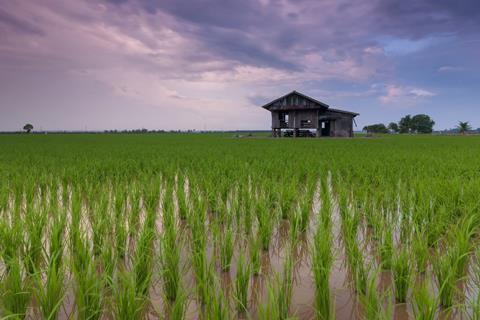Soil microbiome has far-reaching significance, particularly for rice production, which can be better explained with a Japanese proverb: “Rice grows with soil fertility, while upland crops depend on fertilization”.

Therefore, understanding the paddy field microbiome is crucial for sustainable soil fertility and rice production. This would also lead us to overcome the global food shortage problem as rice is the primary food source for nearly half of the world’s population. Among the paddy field microbes, bacteria, fungi, and archaea are well-studied, while protists, the vast majority of eukaryotes, are largely unknown.
Protists are the most diverse eukaryotic microorganisms including all eukaryotes except plants, animals, and fungi. They exhibit high taxonomic diversity and play important roles in soil ecosystem as predators, decomposers, primary producers, plant pathogens, and parasites. Despite their importance, they are by far the least studied microbial group. Since less is still known about soil protistology, studying them holds a vast potential for discovering and creating new knowledge.
Protist communities
One of the fundamental questions in soil microbiology research is “How are soil microbial communities shaped by environmental factors?” Recent efforts to understand protist communities and their response to environmental factors showed that nitrogen fertilizers have a major impact on shaping protist communities. Although nitrogen is applied to agricultural fields in different forms of fertilizer such as urea, ammonium nitrate, and diammonium hydrogen phosphate, their impact on protists is largely unknown.
A new research published in Soil Ecology Letters on 19 January 2024 studied the differential effects of nitrogen fertilizer types on paddy field protist communities. Their research showed that predatory protists were the major functional and most sensitive group to nitrogen fertilizers. Bodur et al. showed that depending on the nitrogen fertilizer type, the protists form distinct communities.
Three soil types
First author, Bodur Ozer Seda, a PhD student at the Laboratory of Applied Protistology, Niigata University, Japan, said “Nitrogen fertilizers are widely used in agriculture, however, we did not know much about how different fertilizers affect protist communities. Our research encompassed six inorganic and one organic fertilizer across three soil types.
“Our results revealed diverse effects of the fertilizers on the protist community, particularly predatory protists. Moreover, the most affected protist group was Cercozoa. These findings represent a crucial first step in understanding how nitrogen fertilizers affect trophic interactions, emphasizing the need for further research to comprehensively grasp soil microbial trophic relationships.”
The lead author Assistant Professor Asiloglu added: “Although this was a short-term laboratory research, our results can be inspiration for further studies to reveal what kind of chances happen in paddy field microbial communities after fertilizer addition. Nitrogen fertilizers are known to affect bacterial and fungal communities as well, here we showed that the changes in predatory protist community composition can be partly responsible for the changes of their prey (bacterial and fungal) communities, which should be further studied.”







No comments yet